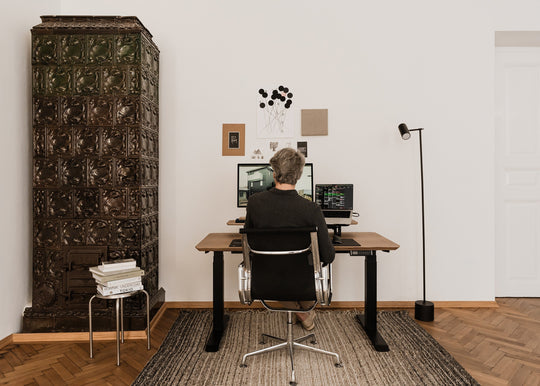
Quiet quitting or simply work-life balance?
‘Quiet quitting’ is a trend increasing in popularity in the post-pandemic world – despite the fact that the practice itself is nothing new. Some see it as a dangerous tendency while others aren’t concerned at all. One thing is for certain: quiet quitting is spreading and taking up more space on social media. What is its source and is it something worth worrying about?

What is quiet quitting?
According to a Gallup report, 85% of workers worldwide are not ‘actively engaged’ in their work and can, subsequently, be practicing quiet quitting already. The sheer scale of this phenomenon encourages reflection on the meaning of the experience and its origins. The term ‘quiet quitting’ is most often defined as limiting our work efforts to the bare minimum, that is only performing tasks defined in our employment contract and expected from our position. In other words, it is a refusal of taking on voluntary assignments, unpaid overtime, and inheriting extra duties from co-workers who have perhaps been let go.

Photo by Craig Garner on Unsplash
You get what you paid for
Therefore, an employee doesn’t actually quit or hand in their notice – they still perform their duties but don’t volunteer to go above and beyond for their employer. What then is the problem? The capitalist system has made us accustomed to the ubiquitous cult of productivity, efficiency, and sacrifice for inadequate compensation (temporarily, of course), all in hope of a dream career, a promotion, or a salary increase in the undetermined future. Meanwhile, more and more people become disillusioned with the narrative preaching a 5 am start and 16-hour workdays will lead to spectacular success.
Employers see this as a threat to their businesses’ operations as, in extreme cases, a ‘quiet quitter’ can start performing their most basic duties with the least amount of effort and thus generate low quality outputs. However, the decline in the quality of work can come from places other than simple laziness: low pay combined with high expectations, the so called ‘junk contracts’, chronic stress, or being underappreciated despite the initial effort and enthusiasm all contribute to the dreaded quiet quitting taking hold.

Photo by Andrew Neel on Unsplash
Quiet quitting versus professional burnout
For many workers, quiet quitting serves as a defence mechanism against burnout. According to the WHO definition, professional burnout syndrome manifests as significant drops in energy levels, exhaustion, mentally distancing from one’s job, increased cynicism and defeatism towards work, and reduced professional efficacy. The causes of this problem are inadequately managed chronic stress, overload of duties which become unsustainable for one person to keep up with, working under constant time pressure, workplace conflicts, bleak routine and lack of professional advancement opportunities, as well as absence of work-life balance (perhaps a complete lack of personal life).
Professional burnout symptoms may also include deprecating one’s skills, low self-esteem, lack of job satisfaction (assuming that it was previously fulfilling), low mood, irritability, inability to concentrate, even insomnia, reoccurring headaches, and weakened immune system.
Investigation conducted in 2021 by UCE Research and Syno Poland showed that around 65% of Poles show signs of professional burnout. Similar results were shown by a survey conducted by FlexJobs together with the MHA (Mental Health America) in July 2020 – 75% of working Americans experienced professional burnout with 40% of them attributing it to the pandemic which forced most of them to work even more than before. The effects of the widespread professional burnout coupled with the ever-present effects of the Covid-19 pandemic could be quickly felt by 2021 when the so-called Great Resignation or Big Quit caused a mass exodus of workers from their places of employment. Those who decided against the move have, in many instances, become the quiet quitters.

Photo by Priscilla Du Preez on Unsplash
Work culture and work-life balance – how to maintain engagement
Is taking on more than we can handle and giving 300% effort at work the only alternative to doing the bare minimum? Or is there a healthy middle to be found? Is quiet quitting, or maybe ‘doing one’s job’ a response to this need for moderation? Performing our workplace duties exclusively during work hours and not in our free time, on the weekends, during the holidays, or on vacation shouldn’t be seen as phoning it in but as a healthy approach crucial for maintaining a work-life balance which is key in avoiding professional burnout.
In order to foster and maintain a greater employee engagement, it is necessary to take care of their wellbeing and work culture. A great idea would be hiring a culture manager whose role would be to create and look after an atmosphere conducive to efficient work, and to organize team-building events to strengthen co-worker relations in the team (we at Oakywood practice what we preach and can attest that having a culture manager is hugely beneficial!).
It is also important to make sure that no single employee gets burdened with excess tasks which should be split between two people. Having realistic expectations and allocating work sensibly ensures high productivity timely completion of tasks.
Adequate pay, a transparent development path, clearly formulated expectations and duties, caring for employees’ physical and mental wellbeing, all without resorting to carrot dangling tactics, are the best way to ensure satisfactory engagement levels in a company. Thus, we suggest the term ‘quiet quitting’ should be retired and replaced with the good old ‘work-life balance’.








